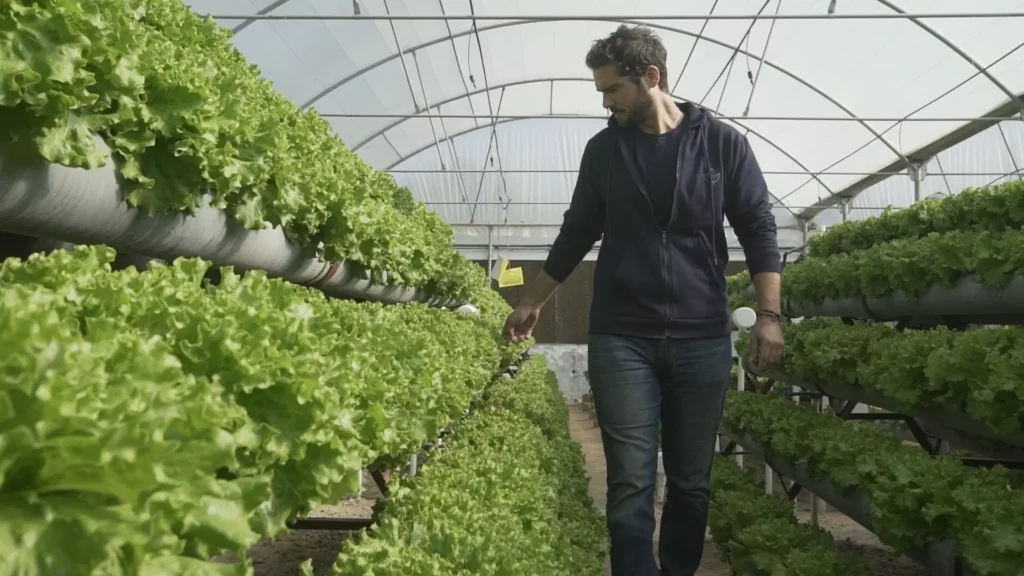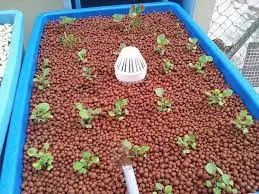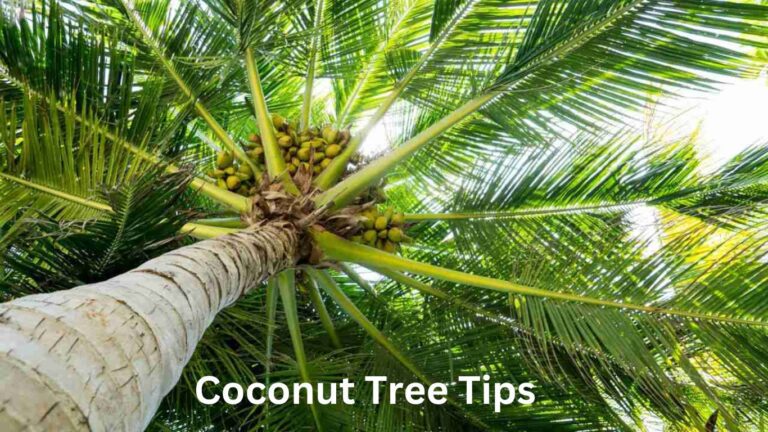How to grow a super hydroponic garden in California climates in winter

Understanding the California climate and its impact on hydroponic gardening in winter:
How to grow hydroponic garden in California climates in winter
The hydroponic garden in California climate is known for its diversity and can vary significantly depending on the region. This variation has a direct impact on hydroponic gardening during winter, as different areas experience different temperatures, rainfall, and sunlight levels. In general, California winters are mild compared to other regions, with average temperatures ranging from the 40s°F to 60s°F (4°C to 15°C). However, higher elevations and coastal areas may experience cooler temperatures, while inland regions can be warmer.
Understanding these variations is crucial for successfully growing hydroponic gardens during winter in California. The temperature plays a vital role in the growth and development of plants, as it affects their metabolism, water absorption, and nutrient intake. Additionally, sunlight availability is crucial for photosynthesis, which is the process that provides energy for plant growth. By understanding the expected temperature range and sunlight levels in your specific area, you can make informed decisions regarding plant selection, indoor setup, lighting requirements, and ventilation techniques to ensure optimal growth and yield in your hydroponic garden during the winter season.
Selecting the right hydroponic system for winter gardening in California.
When it comes to winter gardening in California, selecting the right hydroponic system is crucial for the success of your plants. One popular choice for winter hydroponic gardening is the deep water culture (DWC) system. This system involves suspending the plants’ roots in a nutrient-rich solution, allowing for optimal nutrient uptake and oxygenation.
With proper insulation and temperature monitoring, this system can provide a stable and controlled environment for your plants to thrive in the colder months. Another option to consider is the nutrient film technique (NFT) system, which involves a continuous flow of nutrient solution over the roots, keeping them hydrated while minimizing the risk of freezing. This system is particularly suitable for leafy greens and herbs, making it a great choice for winter gardening in California.
Another important factor to consider when selecting a hydroponic system for winter gardening in California is energy efficiency. As colder temperatures require additional heating to maintain an ideal growing environment, choosing a system that minimizes energy consumption can help reduce costs and improve sustainability. Insulated grow tents or greenhouse structures with double-glazed windows can help retain heat effectively, while energy-efficient lighting options such as LED grow lights can provide the necessary illumination without excessive energy usage.
Additionally, incorporating a timer system for your hydroponic setup can help regulate lighting and ensure that your plants receive the right amount of light during the winter months. By carefully selecting a hydroponic system that suits the specific needs of your plants and optimizing energy efficiency, you can create a successful winter garden in California.
Choosing appropriate plant varieties that thrive in hydroponic gardens during winter in California.
When growing hydroponic gardens in California during the winter, selecting appropriate plant varieties is crucial to ensure successful and thriving growth. Certain plants are better suited to withstand the colder temperatures and fluctuating climate conditions.
One popular choice for winter hydroponic gardening in California is lettuce. Lettuce varieties such as Buttercrunch, Romaine, and Bibb are known for their cold tolerance and ability to thrive in hydroponic systems. These leafy greens not only provide a nutritious addition to your diet but also have a relatively short growth cycle, making them a convenient choice for winter gardening.
Another suitable option for hydroponic gardens in California winter climates is kale. Kale is a hardy plant that can withstand low temperatures and continue to grow, providing a fresh supply of nutrient-rich greens throughout the season. Varieties such as Lacinato and Red Russian kale are particularly well-suited for hydroponic cultivation and can be enjoyed in salads, smoothies, or cooked dishes.
Creating a suitable indoor setup to protect plants from the cold weather hydroponic garden in California.
Creating a suitable indoor setup to protect hydroponic plants from the cold weather in California requires careful consideration of several factors. First and foremost, it is essential to choose an appropriate location for your indoor hydroponic garden. Ideally, this space should have access to natural light or be equipped with grow lights that can provide the optimal spectrum and intensity necessary for plant growth.
To ensure temperature stability, it is crucial to insulate the indoor setup properly. This can be achieved by using insulating materials such as foam panels or reflective bubble wrap on the walls, floor, and ceiling of the growing area. Additionally, sealing any gaps or cracks will help to prevent cold drafts from entering the space.
Proper ventilation is another key aspect of creating a suitable indoor setup. While it is essential to maintain a warm environment, it is equally important to ensure adequate airflow to prevent the buildup of moisture and the growth of mold or other harmful pathogens. Installing exhaust fans and intake vents, as well as using oscillating fans, can promote air circulation and reduce the risk of condensation.
By taking these measures, you can create a well-insulated and ventilated indoor setup that provides a safe and warm environment for your hydroponic plants, allowing them to thrive even during the cold winter months in California. However, there are other important factors to consider to ensure successful winter gardening in hydroponics, such as lighting and heating requirements, managing nutrient solutions and pH levels, and preventing pests and diseases. These topics will be explored further in the upcoming sections of this article.
Providing the necessary lighting and heating requirements for hydroponic garden in California in winter.
Providing adequate lighting and heating is crucial for sustaining hydroponic gardens during the winter season in California. With shorter daylight hours and colder temperatures, it is essential to ensure that the plants receive the necessary light and warmth for healthy growth.
When it comes to lighting, utilizing high-quality LED grow lights is recommended for winter hydroponic gardens. LED lights are energy-efficient, emit less heat, and can be tailored to specific plant needs. It is important to select lights with the appropriate spectrum for each growth stage of the plants, such as blue for vegetative growth and red for flowering or fruiting. By simulating sunlight, the plants can continue photosynthesis effectively.
In terms of heating, maintaining an optimal temperature range is crucial for plant health. Most hydroponic systems require the root zone temperature to be between 65°F and 75°F (18°C to 24°C). This can be accomplished through the use of heaters specifically designed for hydroponic systems. Alternatively, supplemental heating methods like heat mats or heat cables can be employed to warm the root zone. It’s important to monitor the temperature regularly and adjust the heating accordingly to prevent overheating or cold stress.
By providing the appropriate lighting and heating requirements, hydroponic gardeners in California can effectively overcome the challenges posed by winter conditions and ensure successful plant growth throughout the season.
Managing nutrient solutions and pH levels during the winter season hydroponic garden in California

In hydroponic gardening, managing nutrient solutions and pH levels becomes especially crucial during the winter season in California. The cold temperatures and reduced sunlight can impact plant growth and nutrient uptake, making it essential to provide optimal conditions for the plants’ well-being.
One of the key considerations in managing nutrient solutions is maintaining the appropriate balance of essential minerals and elements. Adequate levels of macronutrients such as nitrogen, phosphorus, and potassium, as well as micronutrients like iron, magnesium, and calcium, are vital for healthy plant development. Regular monitoring of nutrient levels through testing and analysis can help ensure that the plants have access to the necessary nutrients they need.
Additionally, maintaining the appropriate pH levels in the nutrient solution is crucial for proper nutrient uptake. Most hydroponic plants thrive in slightly acidic to neutral pH levels, with a range of 5.5 to 6.5 being optimal for many plant species. Regular pH testing and adjustments using pH buffers or acid/alkali solutions can help maintain a stable pH level, allowing plants to efficiently absorb nutrients. By closely monitoring and adjusting nutrient solutions and pH levels, hydroponic gardeners in California can provide their plants with optimal growing conditions, even during the challenging winter season.
Implementing proper ventilation and air circulation techniques to ensure healthy plant growth in hydroponic garden in California during winter.
Proper ventilation and air circulation are crucial for maintaining healthy plant growth in hydroponic gardens during the winter season in California. When growing plants indoors, it is important to create an environment that mimics the natural conditions they would experience in an open-air setting. Inadequate ventilation can lead to a buildup of excess moisture, which can increase the risk of fungal diseases and hinder plant growth. Additionally, poor air circulation can prevent the proper exchange of gases, such as carbon dioxide and oxygen, which are essential for photosynthesis.
To ensure optimal ventilation and air circulation, there are a few key techniques that gardeners can implement. First, using fans can help to promote air movement within the growing area. Placing fans strategically, such as near the base of plants and above the canopy, can help to distribute air evenly and prevent stagnant pockets of air. It is also recommended to periodically open windows or vents to allow fresh air to enter the indoor space and prevent the buildup of stale air. Lastly, using a carbon filter in conjunction with the fans can help to remove any odors or impurities from the air, creating a healthier and more pleasant environment for both plants and growers.
By implementing these proper ventilation and air circulation techniques, hydroponic gardeners in California can ensure that their plants receive the essential elements they need for healthy growth, even during the winter months. However, it is important to regularly monitor and adjust these systems as needed, as environmental conditions can change throughout the season. With the right balance of airflow and fresh air exchange, hydroponic gardens can thrive, allowing gardening enthusiasts to enjoy a continuous supply of fresh and nutritious produce all year round.
• Using fans strategically can promote air movement within the growing area
• Placing fans near the base of plants and above the canopy prevents stagnant pockets of air
• Opening windows or vents periodically allows fresh air to enter and prevent stale air buildup
• Using a carbon filter with fans removes odors and impurities from the air
• Regular monitoring and adjustment of ventilation systems is necessary as environmental conditions change throughout the season
Preventing and managing pests and diseases commonly encountered in hydroponic garden in California
Pests and diseases can pose a significant threat to hydroponic gardens, especially during the winter months in California. However, with proper prevention and management strategies, gardeners can effectively protect their plants and ensure healthy growth.
One key prevention strategy is maintaining a clean and sanitized growing environment. Regularly clean all equipment, including grow trays, reservoirs, and tools, to eliminate any potential breeding grounds for pests and pathogens. Additionally, consider implementing a strict hygiene routine when handling plants to minimize the risk of contamination.
Another important aspect of pest and disease management is early detection. Regularly inspect plants for any signs of infestation or disease, such as yellowing leaves, wilting, or unusual growth patterns. If any issues are identified, prompt action should be taken to prevent further spread. This may include removing affected plants, isolating them from healthy ones, or treating them with appropriate organic or chemical solutions.
By adopting these preventive measures and implementing a proactive management approach, hydroponic gardeners in California can effectively minimize the risks posed by pests and diseases during the winter season. Stay tuned for the next section, which will delve into monitoring and adjusting water levels and irrigation schedules for hydroponic gardens in California during winter.
Monitoring and adjusting water levels and irrigation schedules for hydroponic garden in California during winter.
During the winter season in California, monitoring and adjusting water levels and irrigation schedules for hydroponic gardens becomes crucial to ensure the health and productivity of the plants. The cold temperatures and decreased sunlight can have a significant impact on the water requirements of the plants, and proper management is key to avoid over or under-watering.
One important aspect of water management in hydroponic gardens during winter is maintaining the right moisture levels in the growing medium. As the temperature drops, the evaporation rate decreases, which means that the growing medium retains moisture for longer periods. This can lead to waterlogging and root rot if not addressed promptly. Regularly monitoring the moisture content and using appropriate drainage systems can help prevent these issues and ensure optimal root development and nutrient uptake.
In addition to monitoring moisture levels, adjusting the irrigation schedule is essential to meet the changing needs of the plants in winter. With reduced sunlight and lower temperatures, the plants’ growth rate slows down, which affects their water requirements. It’s important to consider the specific needs of each plant variety and adjust the irrigation frequency and duration accordingly. Consistently monitoring the plants’ water uptake and adjusting the irrigation schedule based on their needs will help maintain the ideal balance between hydration and preventing water-related problems.
Troubleshooting common issues and challenges faced when growing hydroponic garden in California climates in winter.

During the winter months in California, hydroponic gardeners face a unique set of challenges related to the climate. One common issue is the fluctuating temperatures that can occur both indoors and outdoors. Sudden cold snaps or temperature fluctuations can stress plants, leading to slower growth or even death. It is crucial to monitor and regulate temperatures in your hydroponic setup to ensure the optimal conditions for plant growth. Using thermometers and heaters can help maintain a consistent temperature and protect your plants from extreme cold.
Another challenge that hydroponic gardeners may encounter in California winters is decreased sunlight intensity and shorter daylight hours. Because hydroponic systems rely on artificial lighting, it is essential to provide the right amount and spectrum of light for your plants. Inadequate lighting can result in stunted growth and leggy plants. Consider using full-spectrum LED grow lights as they provide the necessary light wavelengths for photosynthesis and mimic natural sunlight. Additionally, adjusting the light duration to match the reduced daylight hours can help maintain healthy growth during the winter season.
In the next section, we will explore tips and strategies for troubleshooting other common issues and challenges faced when growing hydroponic gardens in California climates in winter.
Can hydroponic garden in California be done during the winter?
Yes, hydroponic gardening can be done in California during the winter by creating a suitable indoor setup to protect plants from the cold weather.
What is the best system for winter hydroponic garden in California?
The best hydroponic system for winter gardening in California may vary depending on individual preferences, but some popular options include deep water culture (DWC), nutrient film technique (NFT), and ebb and flow systems.
Which plant varieties are suitable for hydroponic garden in California during winter?
Some plant varieties that thrive in hydroponic gardens during the winter in California include leafy greens like lettuce, spinach, and kale, as well as herbs like parsley, basil, and cilantro.
How can I protect my hydroponic garden in California from the cold weather?
Creating a suitable indoor setup with insulation, heating equipment, and proper ventilation can protect hydroponic plants from the cold weather in California.
What lighting and heating requirements are necessary for hydroponic garden in California?
Hydroponic gardens in winter require adequate artificial lighting, such as LED grow lights, to supplement natural sunlight. Heating equipment may also be needed to maintain an optimal temperature range for plant growth.
How do I manage nutrient solutions and pH levels in hydroponic gardens during the winter in California?
Regularly monitoring and adjusting nutrient solutions and pH levels is important in hydroponic gardens during winter. This can be done by testing the nutrient solution regularly and making necessary adjustments using pH adjusters and nutrient supplements.
How can I ensure healthy plant growth in hydroponic gardens during winter in California?
Proper ventilation and air circulation techniques, such as using fans or air pumps, should be implemented to ensure healthy plant growth in hydroponic gardens during winter in California.
What are common pests and diseases encountered in hydroponic gardens in California winter climates?
Some common pests and diseases encountered in hydroponic gardens during winter in California include aphids, whiteflies, powdery mildew, and root rot. Proper pest management techniques, such as using organic insecticides and maintaining proper hygiene, can help prevent and manage these issues.
How should I monitor and adjust water levels and irrigation schedules for hydroponic gardens in California during winter?
Regularly monitoring water levels and adjusting irrigation schedules based on plant needs is crucial in hydroponic gardens during winter. This can be done by using water level indicators and timers to ensure plants receive the right amount of water.
What are some common issues and challenges faced when growing hydroponic gardens in California climates in winter?
Some common issues and challenges faced when growing hydroponic gardens in California climates in winter include maintaining proper temperature and humidity, preventing nutrient deficiencies or imbalances, dealing with pests and diseases, and managing water levels and irrigation schedules effectively.






